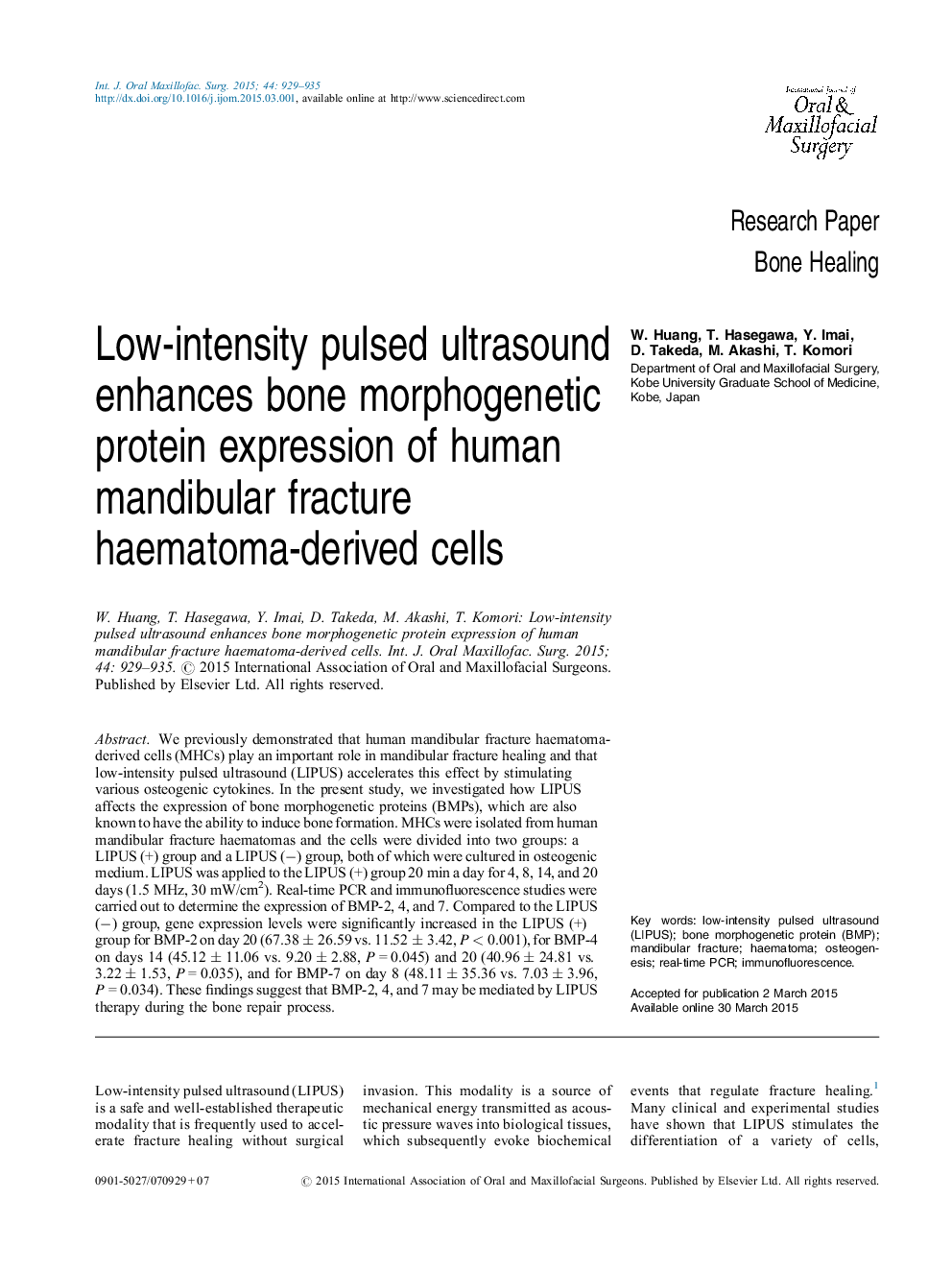| Article ID | Journal | Published Year | Pages | File Type |
|---|---|---|---|---|
| 3132446 | International Journal of Oral and Maxillofacial Surgery | 2015 | 7 Pages |
We previously demonstrated that human mandibular fracture haematoma-derived cells (MHCs) play an important role in mandibular fracture healing and that low-intensity pulsed ultrasound (LIPUS) accelerates this effect by stimulating various osteogenic cytokines. In the present study, we investigated how LIPUS affects the expression of bone morphogenetic proteins (BMPs), which are also known to have the ability to induce bone formation. MHCs were isolated from human mandibular fracture haematomas and the cells were divided into two groups: a LIPUS (+) group and a LIPUS (−) group, both of which were cultured in osteogenic medium. LIPUS was applied to the LIPUS (+) group 20 min a day for 4, 8, 14, and 20 days (1.5 MHz, 30 mW/cm2). Real-time PCR and immunofluorescence studies were carried out to determine the expression of BMP-2, 4, and 7. Compared to the LIPUS (−) group, gene expression levels were significantly increased in the LIPUS (+) group for BMP-2 on day 20 (67.38 ± 26.59 vs. 11.52 ± 3.42, P < 0.001), for BMP-4 on days 14 (45.12 ± 11.06 vs. 9.20 ± 2.88, P = 0.045) and 20 (40.96 ± 24.81 vs. 3.22 ± 1.53, P = 0.035), and for BMP-7 on day 8 (48.11 ± 35.36 vs. 7.03 ± 3.96, P = 0.034). These findings suggest that BMP-2, 4, and 7 may be mediated by LIPUS therapy during the bone repair process.
